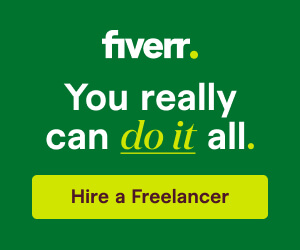The gig economy isn’t what it used to be. Five years ago, task-based platforms like Upwork, Fiverr, and TaskRabbit operated on relatively simple models—workers offered services, clients posted jobs, and the platform took a cut. Today, artificial intelligence is quietly transforming every aspect of how these marketplaces function, from how jobs are matched to who (or what) actually completes the work. The changes are happening fast, and they’re creating both opportunities and upheaval for freelancers and businesses alike.
The Matching Game: No More Needle-in-a-Haystack Searches
Anyone who’s spent hours scrolling through low-quality job postings or competing against hundreds of applicants for a single gig understands the frustration of traditional task platforms. AI is changing that through sophisticated matching algorithms that go far beyond simple keyword searches.
Platforms like Upwork now use machine learning to analyze thousands of data points—from a freelancer’s past project success rates to the specific times they’re most active—to connect them with ideal clients. Fiverr’s AI examines project descriptions and automatically suggests the most suitable freelancers before clients even start searching. These systems aren’t perfect, but they’re reducing the time spent on fruitless applications while increasing quality matches.
The dark side? These algorithms create feedback loops where top-rated workers get shown more often, making it harder for newcomers to break in. Some platforms are countering this with “rising talent” algorithms that identify promising new freelancers, but the playing field still isn’t level.
The Rise of AI Middlemen: When Bots Handle the Hiring
Perhaps the most dramatic shift is occurring in how clients and workers communicate. AI chatbots now handle initial interactions on many platforms, asking clarifying questions about projects, negotiating timelines, and even screening applicants before a human gets involved.
On TaskRabbit, an AI assistant called “TaskBot” manages the entire booking process for simple jobs like furniture assembly or cleaning. It assesses the job requirements, checks availability, and confirms bookings—all without human intervention. Similarly, Fiverr’s AI can generate custom project scopes based on a client’s vague description (“I need a logo for my vegan bakery”) and automatically match it with appropriate service tiers and freelancers.
For workers, this means less time wasted on back-and-forth messages with tire-kickers. But it also means having to optimize profiles and communication styles for AI rather than human readers—using specific keywords, structured pricing packages, and other algorithmic sweet spots.
Quality Control Gets Automated
AI is also taking over what was once the most human aspect of platforms—quality control and dispute resolution. Instead of relying solely on user reviews (which are easily gamed), platforms now employ AI systems that:
- Analyze work submissions for plagiarism or AI-generated content
- Compare delivered work against project requirements
- Detect fraudulent activity or payment risks
- Predict which projects are likely to result in disputes
For example, Upwork’s “Job Success Score” now incorporates machine learning that assesses dozens of subtle factors beyond simple ratings, like how often a freelancer’s clients return or how their bids compare to the final project scope.
The Elephant in the Room: AI as Competition
While AI is improving platforms, it’s also becoming direct competition. Many tasks that once went to freelancers—basic graphic design, content writing, coding snippets—can now be handled instantly by AI tools at a fraction of the cost.
Platforms are adapting in different ways. Fiverr now offers “AI Services” as a category where humans help clients implement AI tools. Upwork has added AI specialists who help businesses integrate automation. But for many generalist freelancers, the message is clear: adapt or become obsolete.
Some workers are fighting back by using AI to enhance their own services—offering “human-AI hybrid” work where they provide the creative direction and quality control that AI still lacks. The freelancers thriving in this new landscape are those who’ve learned to position themselves as AI collaborators rather than competitors.
Payment and Pricing Revolution
AI-driven dynamic pricing is changing how much workers earn. Platforms now use algorithms that:
- Adjust service prices based on real-time demand
- Suggest optimal bidding strategies
- Predict payment risks before work begins
For instance, a graphic designer might be advised to charge 20% more during peak business seasons, or a programmer might get warned that a particular client has a history of payment disputes.
The Future: Hyper-Personalization and Predictive Work
Looking ahead, AI will enable task platforms to move from reactive marketplaces to predictive work ecosystems. Imagine:
- Platforms that suggest jobs to freelancers before they’re even posted, based on their working patterns
- AI career coaches that analyze a worker’s strengths and recommend skill upgrades
- Self-adjusting portfolios that automatically highlight relevant past work for each job
These changes are coming fast. The task platforms that survive will be those that use AI to enhance human work rather than replace it—but the line between assistance and replacement is getting thinner every day.
For freelancers and gig workers, the message is clear: understanding these AI systems is no longer optional. The workers who thrive will be those who learn to work with the algorithms rather than against them, using AI tools to enhance their own productivity while maintaining the human edge that machines still can’t replicate.
The gig economy isn’t disappearing—it’s evolving into something more efficient, more competitive, and fundamentally different than what came before. AI isn’t just changing how task platforms work; it’s redefining what gig work means altogether.








